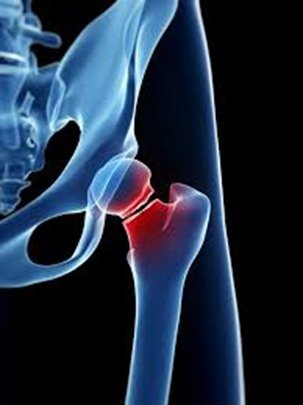Mitigate Pain Clinic – Dr Jeshnu Tople – Pain Management Specialist In Nagpur
Hip Pain
Hip Pain Treatment
Hip pain is a widespread issue that affects people of all ages. The hip joint, one of the body’s largest and most important joints, supports the weight of the body during both stationary and dynamic movements. Because of its constant use, the hip is vulnerable to injury, wear and tear, and various medical conditions.
Hip pain can range from mild discomfort to severe pain that limits movement and disrupts daily life. If left untreated, it can become chronic and harder to manage. At Mitigate Pain Clinic, we specialize in interventional pain management techniques designed to alleviate pain, restore function, and prevent long-term complications.

Understanding the Hip Joint

Common Causes of Hip Pain
Several conditions can lead to hip pain. Understanding the root cause is crucial to developing an effective treatment plan.
Osteoarthritis
Osteoarthritis is one of the most common causes of hip pain. This degenerative joint disease occurs when the cartilage that cushions the joints breaks down, leading to pain, stiffness, and inflammation.

Bursitis
Bursitis occurs when the bursae, small fluid-filled sacs that cushion the bones, tendons, and muscles, become inflamed. This condition can cause sharp pain in the hip, particularly when moving or applying pressure.

Tendinitis




Hip Labral Tear
Hip Fractures
Other Causes

Diagnosing Hip Pain
Conservative Treatment
Before considering more advanced interventional techniques, conservative treatments are often recommended. These may include:
Physical Therapy
Targeted exercises and stretches can strengthen the muscles surrounding the hip, improve flexibility, and alleviate pain.
Medications
Medications such as NSAIDs (non-steroidal anti-inflammatory drugs) or opioids can reduce inflammation and pain.
Rest and Activity Modification
In some cases, limiting activities that exacerbate hip pain, such as high-impact sports or prolonged sitting, can give the joint time to heal.
Interventional Pain Management for Hip Pain
Radiofrequency Ablation (RFA)

Nerve Blocks
Platelet-Rich Plasma (PRP) Therapy

Growth Factor Concentrates (GFC)
When to Consider Hip Surgery
Post-Treatment Rehabilitation and Physical Therapy
How Interventional Pain Management Differs from Surgery
Preventing Hip Pain
Lifestyle Adjustments for Hip Health
Why Choose Mitigate Pain Clinic for Hip Pain Management
Frequently Asked Questions (FAQs)
Our Treatments
- Joint Pain
- Back Pain
- Sciatica Pain
- Neck Pain
- Hand Pain
- Shoulder Pain
- Foot & Ankle Pain
- Limb Pain
- CRPS Pain
- Cancer Pain
- Headache
- Hyperhidrosis
- Herpes Zoster Pain
- Chronic Pelvic Pain
- Scar Tenderness
- Postherpetic Neuralgia
- Trigeminal Neuralgia
- Peripheral Neuralgia
- Chronic Vascular Pain
- Generalised Body Pain
- Chronic Injury Pain
- Failed Back Surgery Syndrome
- Chronic Post Surgical Pain
- Other Painful Conditions
- Slipped DISC / PIVD